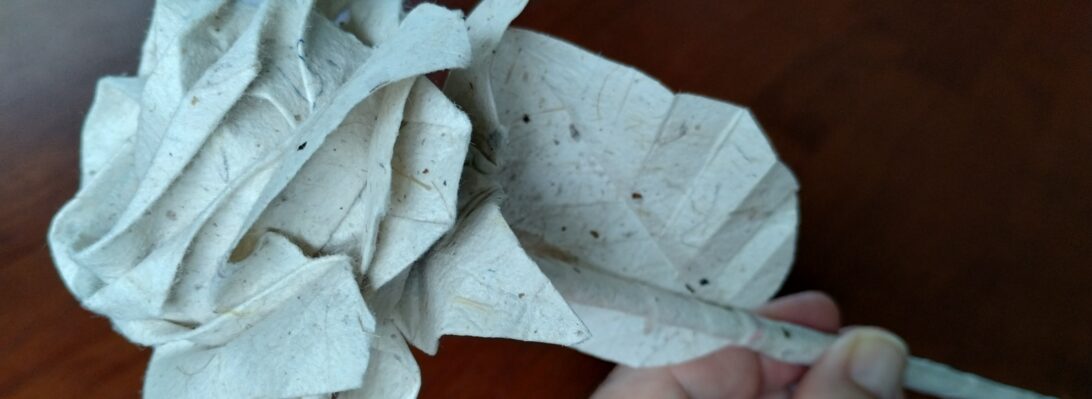Over the last few years I have played with origami tessellations – the theory of a repeatable pattern that interacts with other repeats (molecules) is fascinating and a real testament to the accuracy of the pre-folding. As part of another project, I have been exploring triangle grids, and a devilishly tricky to collapse hex-cell tessellation by Robert Lang he calls “Honeycomb”.

After folding this a number of times, and then schematicizing the molecule, I noticed that “cells” were deep and, due to the nature of the collapsed layers inside I did not think they were very tidy nor kept their shape nicely. All to often, in origami design, paper thickness is disregarded in the theoretical collapse – in this case hiding away most of the paper in canyons between cells deforms them in ugly ways.

I started playing with the corner mechanism, and discovered I could halve the height of the cell wall, making the tuck much less bulky and doubling the size of the resultant folded field on the same bit of paper. Additionally it held itself together nicely with edges that are easy to stabilise. With a little practice (I am sure my work colleagues thought me obsessed, given the number of times I folded this tessellated field) I was ready to scale up … well, down in truth as I folded a “tiny” triangle grid on my target mustard leather-grain paper and then set the corner widgets before collapse only to then realise that folding this small was a real challenge with my nerve damaged, fat clumsy fingers.

I made a video of the collapse, being asked how it worked a number of times – follow along if you can.

Patience … I fatigued the first corner as twiddled the widgets around it, until the collapse set into a rhythm that was easily repeatable (yes, you sort of get into the groove and can collapse relatively quickly using pinch, twist, fold, tuck, unfold) and eventually made progress across the folded grid.

Inaccuracies in pre-folding of less than 1mm actually caused some distortion as it compounded across the sheet, but it is possible to “cheat” each corner widget, and doing so let me “distort” the fold slightly and strategically so it would lie flat. The more cells I folded, the more regular they became as the paper tension sorts out the symmetry for you.

I call this a fold “inspired by” Robert Lang’s honeycomb tessellation, as I think I have changed the mechanism and paper efficiency here a lot – folded larger it is really beautiful geometry – I do not mind seeing the remnant triangle-grid creases as it hints at the origins of the fold nicely I think, but could see a way to laser etch just the folds needed in the collapse to make it cleaner.

Not quite sure how I will use this, but the creative challenge is on, we shall see.


More wonder-filled creativity Peter, amazing. Your post also shows us the intellectual & physical challenge involved and your indomitable patience! 🙂
Hey this is really cool!
I really liked how you generalized the idea. I just wanted to drop in and comment on how the pattern reminds me of Voronoi origami. You can use an algorithm to generate a crease pattern based off a Voronoi diagram for a set of points such that the polygons represented are present in the folded product with the pleats connecting these polygons hidden on the other side of the paper. The mechanism looks very similar to your folds! 🙂
http://orderinspace.blogspot.com/
I tried mocking up a single hexagon cell using Voronoi software on Robby Kraft’s website and got this:
https://imgur.com/KXaWCVf
Anyways, that’s all; I thought you might like seeing these cool extensions. Thanks for another cool post to read! 🙂
Thanks for the comment and links – interesting indeed. The corner widget is much simpler than you imagine – I added a CP of the molecule to clarify – that triangular widget collapses a lot like a mutant waterbomb base, reverses on itself and tucks into the nearest wall facilitating that wall’s top edge to then fold – on the CP I suggested a regular placement (ie. a “swirl”) of tucks but I have found that there is merit in aligning them along crevice lines that line up to make the collapse less brutal on the surrounding paper. Larger scale collapses this decision is easier, smaller scale any particular direction is tricky and takes patience.